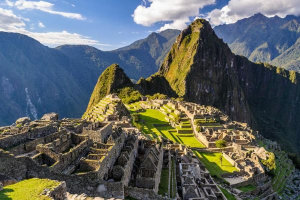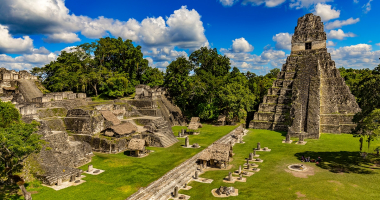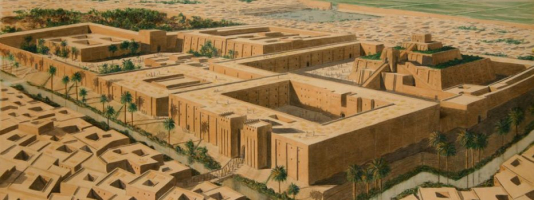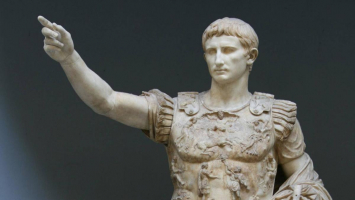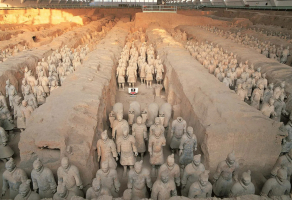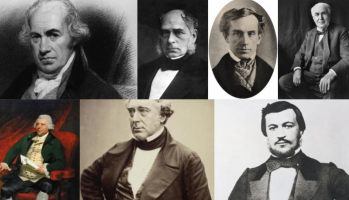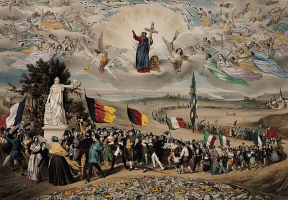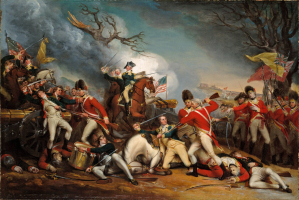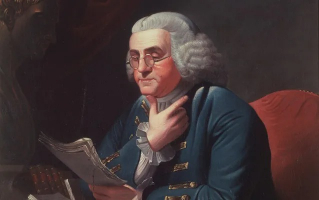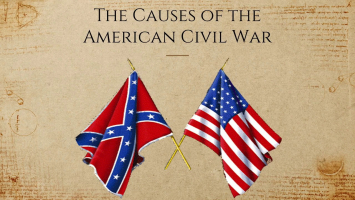Top 10 Major Achievements Of The Ancient Aztec Civilization
The word Aztec is derived from the Aztecah, which meaning "people of Aztlan." Aztlan is a mythical land that the Aztecs called their ancestral home. The Aztecs ... read more...came to the Valley of Mexico and established one of the largest and most powerful empires in pre-Columbian America. A twin aqueduct, a gigantic dike, causeways, artificial islands, and other engineering feats are among their accomplishments. The 10 Major Achievements Of The Ancient Aztec Civilization, encompassing cultural, scientific, engineering, and military achievements, are listed here.
-
In comparison to contemporary civilizations in the Eastern and Western Hemispheres, Aztec education was very advanced. The Aztec Empire was one of the few earlier civilizations that mandated household and school education. Every youngster, regardless of social standing, was educated, whether noble, commoner, or slave. The noble class had two schools, one for nobles and the other for commoners, yet brilliant, intelligent commoners could be selected for higher studies at the aristocratic school. Aztec education, on the other hand, began at home with the parents. Boys learned and worked with their father in a trade or craft, farming, hunting, and fishing, starting at the age of four or five. All of the tasks required to operate a household were taught to girls by their moms.
The Aztec Empire is credited with being the first empire to institute universal compulsory schooling. Regardless of social position, whether aristocratic, commoner, or slave, every child was educated. Boys learned their fathers' occupations, such as hunting, farming, fishing, and so on, while girls learned household responsibilities. All children were forced to attend school from the age of 12 to 15, where they learnt ceremonial music as well as the history and culture of their civilisation. Boys and girls went to separate schools. Girls' formal schooling traditionally concluded at the age of 15. After the age of 15, there were two schools for boys: the Telpochcalli, which was for the poor, and the Calmecac, which was for the aristocracy. Telpochcalli's curriculum was predominantly military in nature, but it also contained civics, history, and religion. Military instruction was mixed with religion, governance, astronomy, math, architecture, history, poetry, and other subjects at Calmecac.
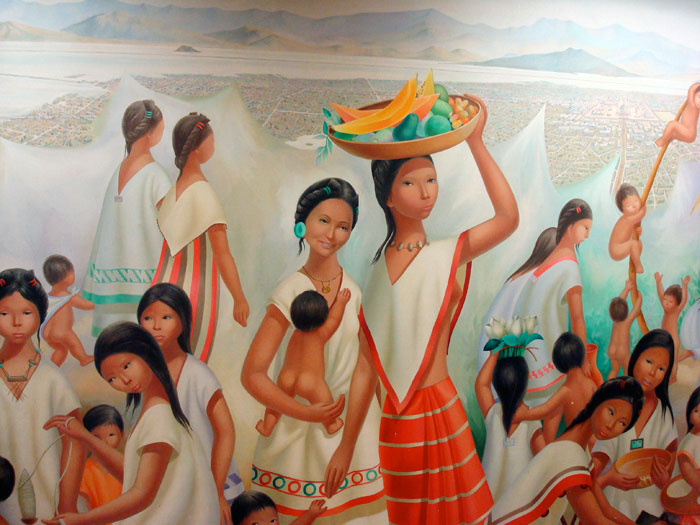
Photo: www.mexicolore.co.uk 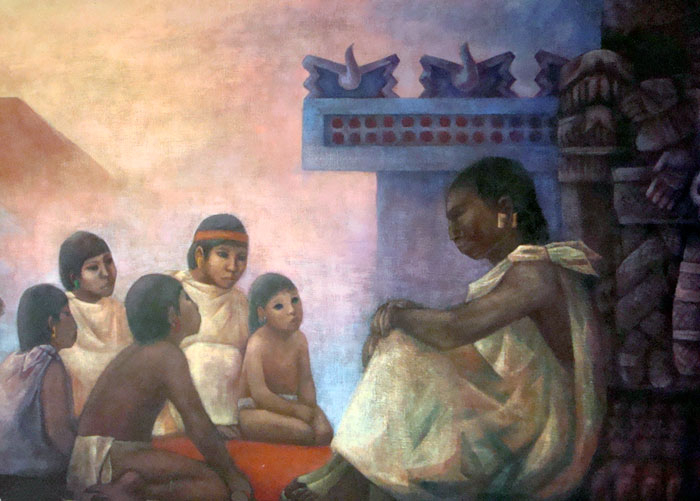
Photo: www.mexicolore.co.uk -
In the 15th and 16th centuries, the Aztec culture, based in Tenochtitlan, ruled most of Mesoamerica. With military conquest and trade expansion, the Aztec civilization's art spread, assisting the Aztec civilization in achieving cultural and political hegemony over their subjects and leaving a physical record of the artists' artistic vision and remarkable talent for posterity. This is also one of the major achievements of the ancient Aztec civilization.
Song and poetry were the highest forms of art in Aztec society, with competitions held at major festivals. Parallelism, which is the use of a structure of embedded couplets to express diverse perspectives on the same material, was a significant feature of their poetry. The Aztecs used to pass down their poetry orally, and compilations of their poems were only created after the Spanish conquest. Romances de los Seores de la Nueva Espaa is the most well-known of these. Flute and drums were among the musical instruments used by the Aztecs. They were skilled at carving stone and wood sculptures of all sizes, from small figurines to enormous monuments. The Sun Stone, also known as the Aztec calendar stone, is possibly the most well-known piece of Aztec sculpture. The Aztecs produced a wide range of magnificent pottery that was in high demand in Mesoamerica. They also fashioned jewelry out of gold, silver, copper, jade, and obsidian, among other materials. Featherwork, on the other hand, was their most cherished art form, which their artists made by weaving together vividly colored feathers to create cloaks, headdresses, and other items.
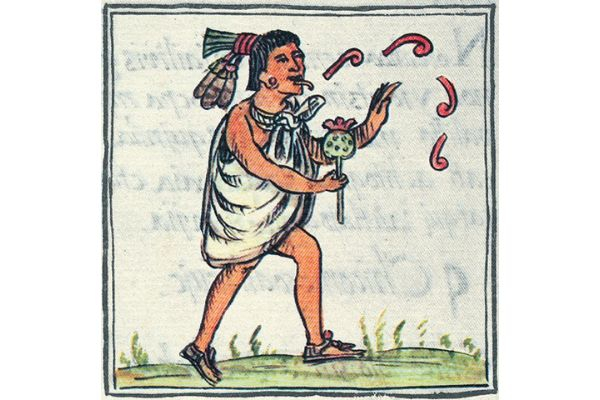
Photo: www.mexicolore.co.uk 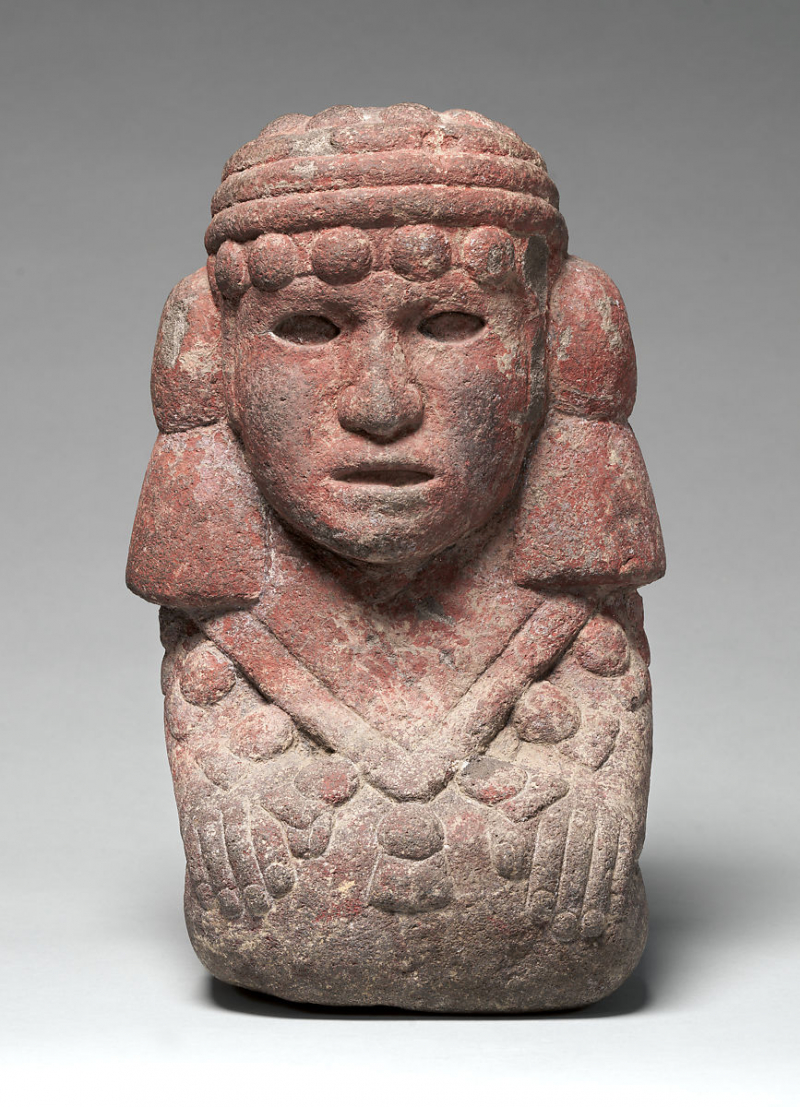
Photo: www.metmuseum.org -
Tictils, or Aztec physicians, were adept herbalists who conducted medicinal research. The Aztecs believed that illness was caused by one of three things: an angry deity or goddess's wrath, an enemy's black magic, or natural causes. They employed a large collection of therapeutic herbs and plants, numbering in the hundreds. They employed maguey tree sap as a cleaner and wound healer, and Argemone mexicana as a pain reliever. The Aztecs used volcanic glass blades to perform surgery. To decrease fractures, they used traction and countertraction, as well as sprains and splints to immobilize fractures. They often covered the wound with crushed plants after surgery to speed up the healing process. They were well-versed in entheogenic flora and animals. They employed them not only for prophetic and religious purposes, but also for medical purposes. During surgeries, they employed the passion flower as a form of antispasmodic drug to relax muscles.
The collection of knowledge, beliefs, and rituals around human health and illness as observed among Nahuatl-speaking peoples in the Aztec territory of central Mexico are referred to as Aztec medicine. The Aztecs had a comprehensive inventory of medical herbs and plants that they knew about and used. From the conquest and later colonial periods, a number of indigenous Nahua and Novohispanic literary texts exist that detail features of the Aztec system and practice of medicine, including remedies, incantations, practical administration, and cultural roots. Traditional Nahua medicinal practices and beliefs can still be found in modern Nahua communities, albeit they are often mixed in with European or other subsequent influences.
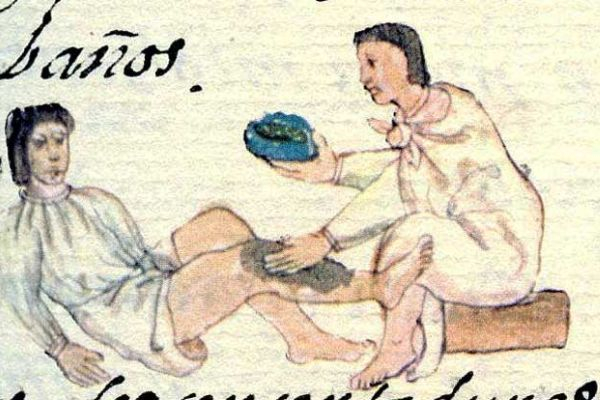
Photo: www.mexicolore.co.uk 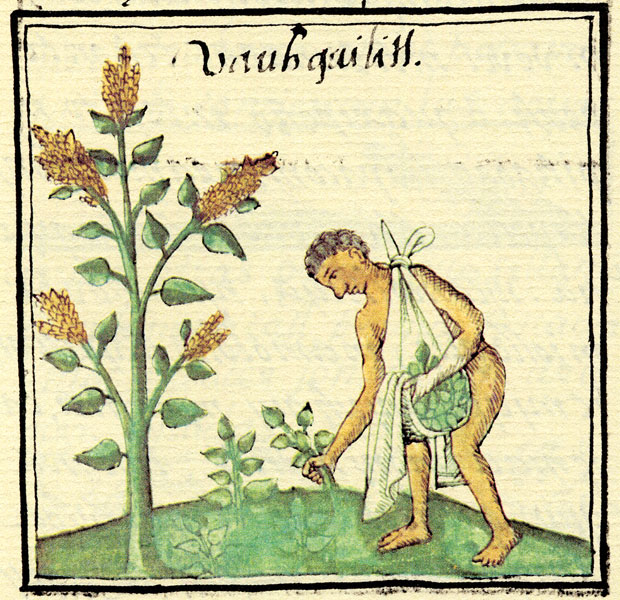
Photo: www.mexicolore.co.uk -
The Aztecs utilized a base 20 or vigesimal number system to keep track of their numbers. To depict values up to 20, dots or a combination of dots and bars were employed. A flag was used to denote 20 and was repeated for quantities up to 400. A fir tree was used to signify 400, while a sack was used to represent 8000. Though they possessed a mental understanding of zero, it is unknown whether they had a symbol for it, hence 0 was not a common number in their system. Multiplication and division, as well as some geometric ideas, were known to the Aztecs. A land rod, which equaled around 2.5 meters, was their standard unit of linear measurement.
They also utilized symbols like an arrow, a heart, a hand, or a bone to symbolize fractional distances when measuring land areas, according to recent research. The Aztecs had a 365-day calendar cycle called xiuhpohualli (year count) and a 260-day ritual cycle called tonalpohualli (day count). Together, these two cycles constituted a 52-year "century." The agricultural calendar is known as the xiuhpohualli, while the sacred calendar is known as the tonalpohualli. This is considered as one of the major achievements of the ancient Aztec civilization.
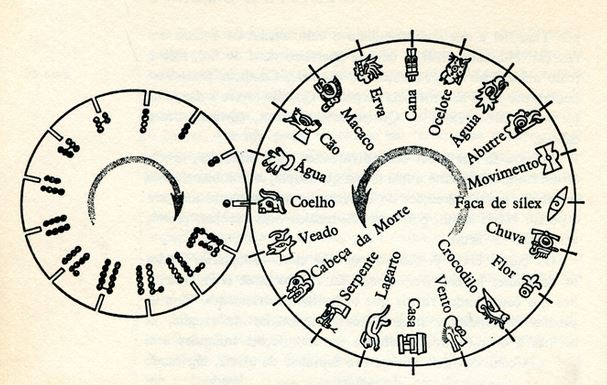
Photo: motmag.com 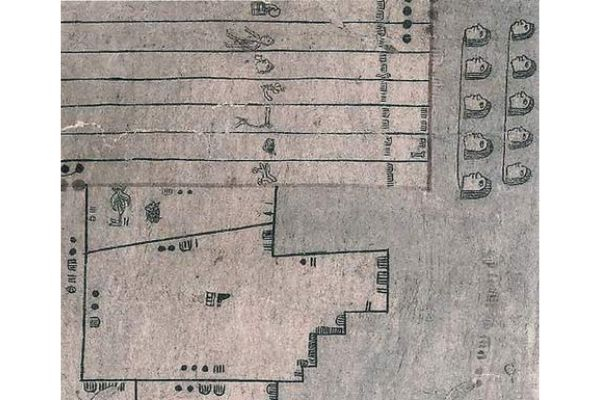
Photo: http://aztecflaim.weebly.com/ -
Tenochtitlan was the largest city in the Pre-Columbian Americas at one time. It had an estimated population of 200,000 to 300,000 people and had an estimated size of 8 to 13.5 km2. It was one of the world's largest cities, with twice the population of London or Rome. The city was divided into four zones, each of which was further subdivided into twenty districts. The Sacred Precinct, which covered about 4,000 square meters (43,000 square feet) and was enclosed by the "coatepantli" wall, was located in the heart of the city (serpent wall).
Templo Mayor ("Main Temple"), a 60 m (180 ft) high pyramid with a foundation of roughly 100 by 80 m, dominated the Sacred Precinct (328 by 262 ft). The Templo Mayor was the most important building in Aztec culture and the center of Aztec worship. Tenochtitlan was one of the best-built and most beautiful towns in the world at the time, with streets, causeways, canals, aqueducts, marketplaces, palaces, and structures like the Templo Mayor. When the Spaniards first visited the place, they were so taken aback that they wondered if it was genuine or if they were dreaming.
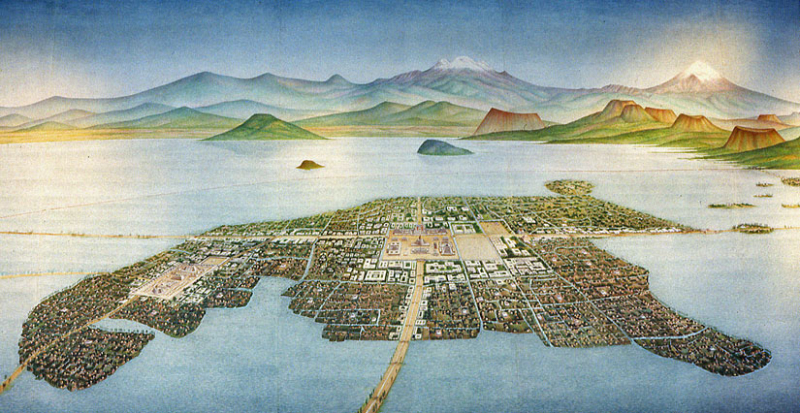
Photo: www.mexicolore.co.uk Video: Geographics -
The Aztecs built causeways and canals for transit to and from the city early on in its history. A causeway is an elevated road that allows people to cross swampy and damp areas with ease. From the island metropolis to the mainland, there were three large causeways. The causeways also had bridges built into them that allowed small boats and canoes to pass beneath them. When the city was assaulted, these bridges could be taken down.
Many canals were also built by the Aztecs throughout the city. The canals functioned as waterways, allowing people to traverse around the huge metropolis in boats with ease. The city was well-planned and laid out in a grid, making it simple to navigate.
Tenochtitlan was continually threatened by the vast amount of water surrounding it since Lake Texcoco was the largest of five interconnecting lakes. In the mid-1400s, a devastating flood nearly devastated the entire city. To deal with the problem, the Aztecs built a massive dike or barrier that reached a height of roughly 12 feet and ran for about 10 miles from the lake's southern shore to its northern boundary. It was the greatest earthwork in the Americas at the time, made of wood, weeds, and stone and it is also one of the major achievements of the ancient Aztec civilization. It had doors that could be raised or lowered to manage the amount of water in the tank behind it. The dike not only protected Tenochtitlan from floods, but it also kept the brackish waters east of the dike at bay.
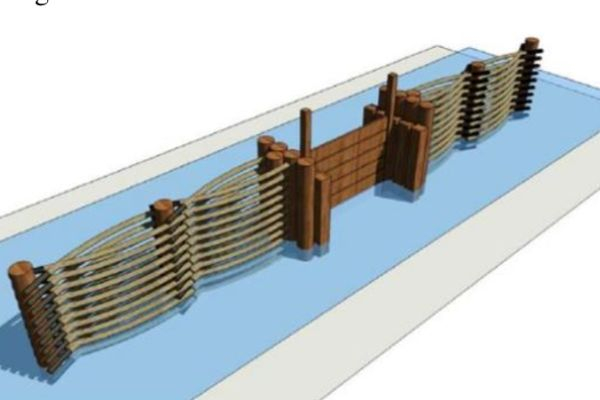
Photo: semanticscholar.org 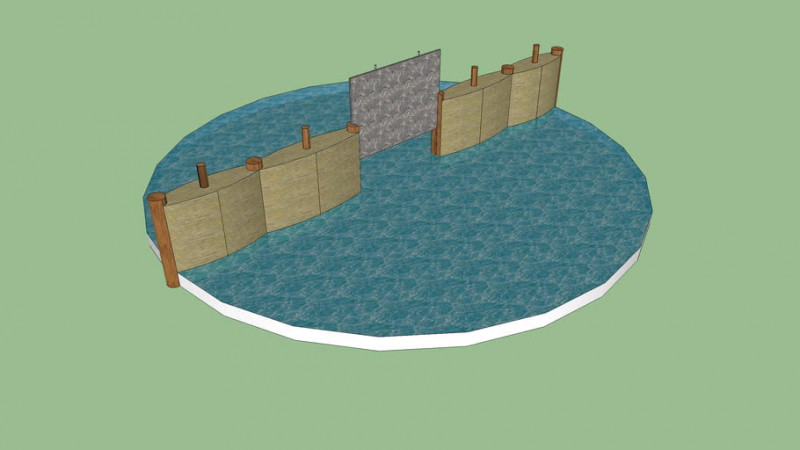
Photo: 3dwarehouse.sketchup.com -
As Tenochtitlan's Aztec population rose, so did the demand for fresh water. The water level beneath Tenochtitlan was just 4-5 feet below the city, and the water collected was brackish, thus it was not a viable source of fresh water. Shallow wells were dug, and the water obtained was used for domestic purposes. In 1418, an aqueduct was built from Chapultepec springs to Tenochtitlan, bringing fresh water appropriate for cooking and drinking. They started building the Chapultepec aqueduct in the 1420s to transport clean water to their city from the springs on the mainland of Chapultepec. The aqueduct was divided into two channels, each measuring about 5 feet high and 3 feet broad. When one channel was being maintained, the other was delivering water to the city, maintaining a steady supply.
The Chapultepec aqueduct was built to supply Tenochtitlan, today known as Mexico City, with potable water. The water for this project came from the Chapultepec springs. During the 15th century, the Aztecs built two aqueducts that followed the same route from the springs, the first of which was destroyed by flooding and the second by the Spanish. A colonial aqueduct was erected after the Spanish conquest, the ruins of which may be found near Metro Sevilla. The three-mile Chapultepec aqueduct supplied water to public fountains and reservoirs. Only a few ancient civilizations could grasp the architecture and building of such a sophisticated aqueduct, hence it is regarded as a noteworthy Aztec achievement.
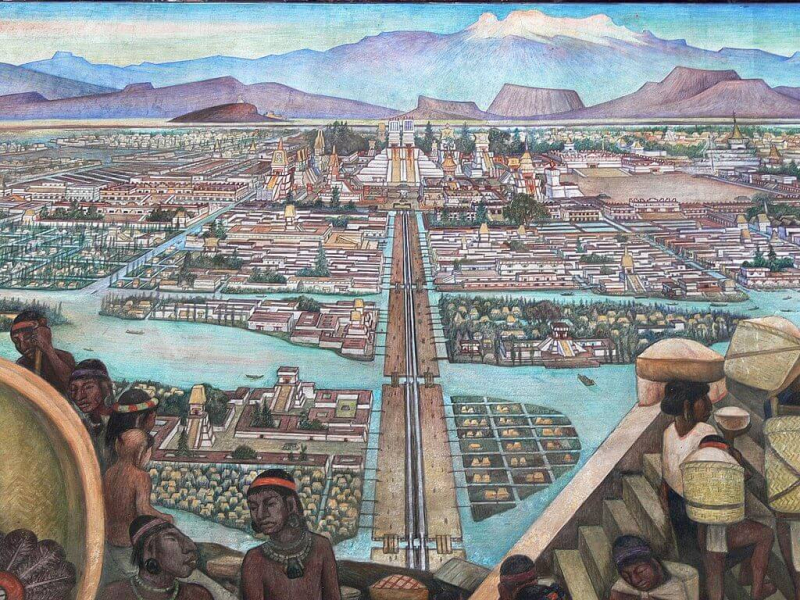
Photo: blurredbylines.com Video: Invicta -
Chinampa is a Mesoamerican farming technique that uses small, rectangular plots of fertile arable land to cultivate crops on the shallow lake beds of the Valley of Mexico. They are constructed for agricultural reasons on wetlands of a lake or freshwater swamp, and their proportions guarantee optimal moisture retention. This is one of the major achievements of the ancient Aztec civilization.
Chinampas, often known as floating gardens, were more correctly described as artificial islands. The Aztecs perfected the method of building chinampas, which allowed them to expand their farming and living areas. Staking out the shallow lake bottom and stringing the stakes together to make fencing formed a chinampa. The fenced-in area was subsequently coated with mud, lake debris, and rotting plants, gradually elevating it above the lake's surface. To sustain the artificially constructed island, trees were frequently planted along the perimeter. Tenochtitlan's chinampas vary in size from 90 m 5 m (300 ft 20 ft) to 90 m 10 m (300 ft 30 ft). The lake supplied the chinampas with moisture packed with decomposing organic wastes, which watered and fertilized the soil of the artificial island, allowing for an intensive and extremely productive style of agriculture. The chinampas could produce up to seven crops per year, providing enough food for the Aztec towns' growing populations.
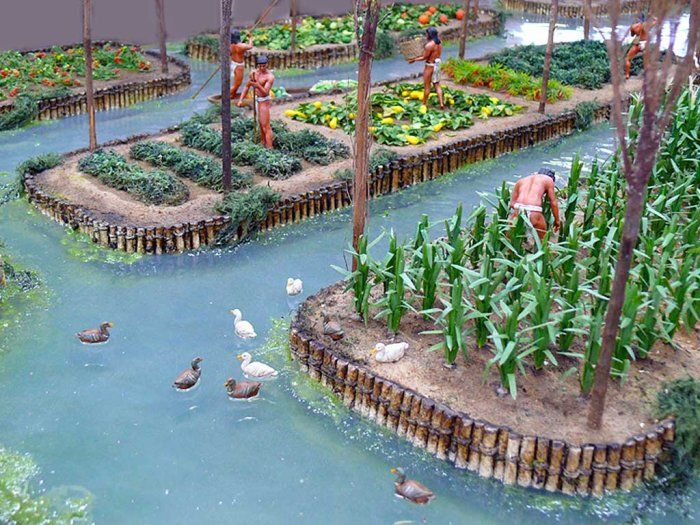
Photo: Pinterest 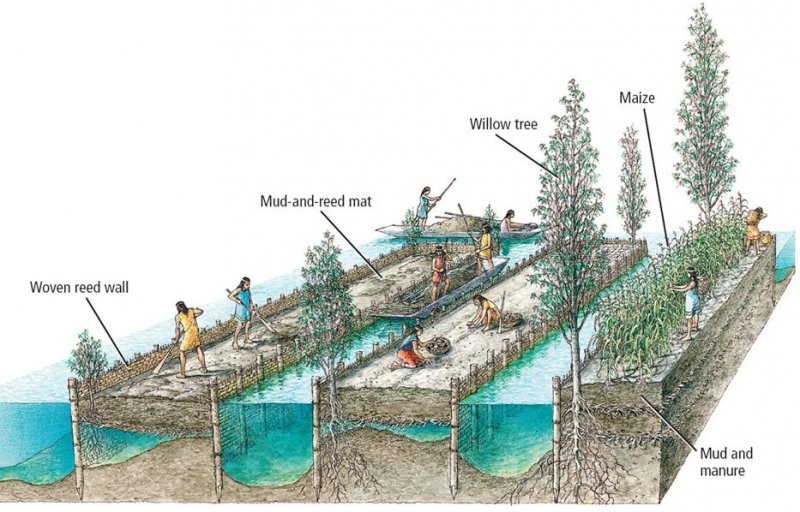
Photo: thearchaeologist.org -
Tenochtitlan was a little swampy island in Lake Texcoco in the Valley of Mexico when the Aztecs founded it in 1325. This created a significant issue for the Aztecs, as whatever structures they constructed would sag due to the region's geology. They devised a clever solution to this problem by pounding wooden piles into the lakebed below water in close-packed formations to give a solid foundation for their structures. To improve strength, the pilings were encased by volcanic stone. The fact that their structures did not tumble or sink despite being built on top of these foundations is a credit to their incredible engineering abilities. Tenochtitlan to the mainland could only be reached by boat.
The Aztecs built three causeways to connect their city to the mainland, one to the north, one to the south, and one to the west. They accomplished this by driving two lines of wooden stakes down into the lake bottom and filling the area between them with soil and stones until the water level was attained. The causeways were built straight and up to 45 feet wide. Bridges would open to allow boats to travel through and to defend the city in the event of an invasion, interrupting them.
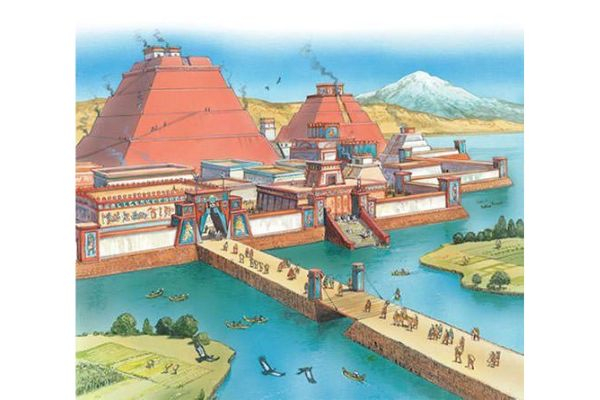
Photo: learnodo-newtonic.com 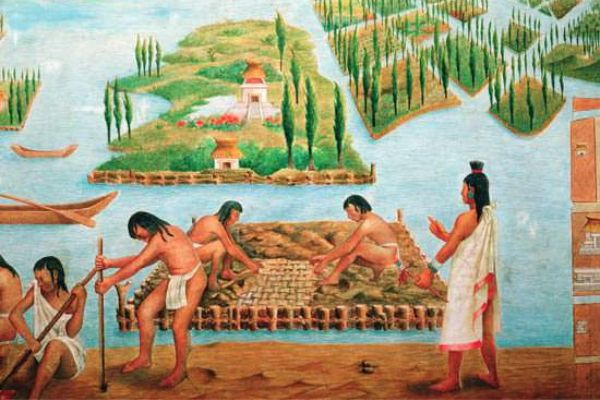
Photo: learnodo-newtonic.com -
The Mexica were a group of migrants that came in the Mexican Valley around 1250 AD and constructed Tenochtitlan in 1325 AD. They first joined with and paid tribute to Azcapotzalco, the Tepanec Empire's capital city. The Azcapotzalco king orchestrated the death of the Mexica monarch in 1426. Tenochtitlan joined forces with the city-states of Texcoco, Tlacopan, and Huexotzinco to fight Azcapotzalco the following year. In 1428, they were triumphant. Huexotzinco withdrew after the war. The Triple Alliance was created by the other three city-states, with Tenochtitlan emerging as the main force. Following its creation, the coalition launched conquest wars and rapidly expanded.
At its peak, the Triple Alliance, sometimes known as the Aztec Empire, ruled over most of central Mexico as well as surrounding lands. It was 80,000 square miles in size, with 25 million people living in nearly 500 towns and cities. Prior to the Spanish conquest, it was one of the largest and most powerful empires in Mesoamerica, the region of Mexico and Central America. The word Aztec is frequently used to refer solely to the Mexica people of Tenochtitlan, but it is also applied to the Acolhuas of Texcoco and the Tepanecs of Tlacopan.
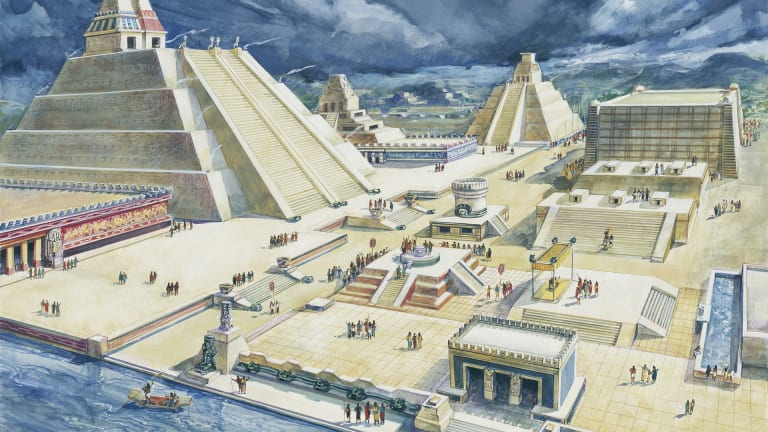
Photo: www.history.com 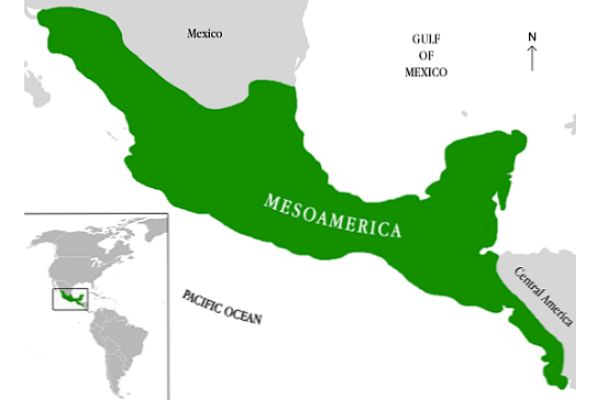
Photo: vi.thpanorama.com












